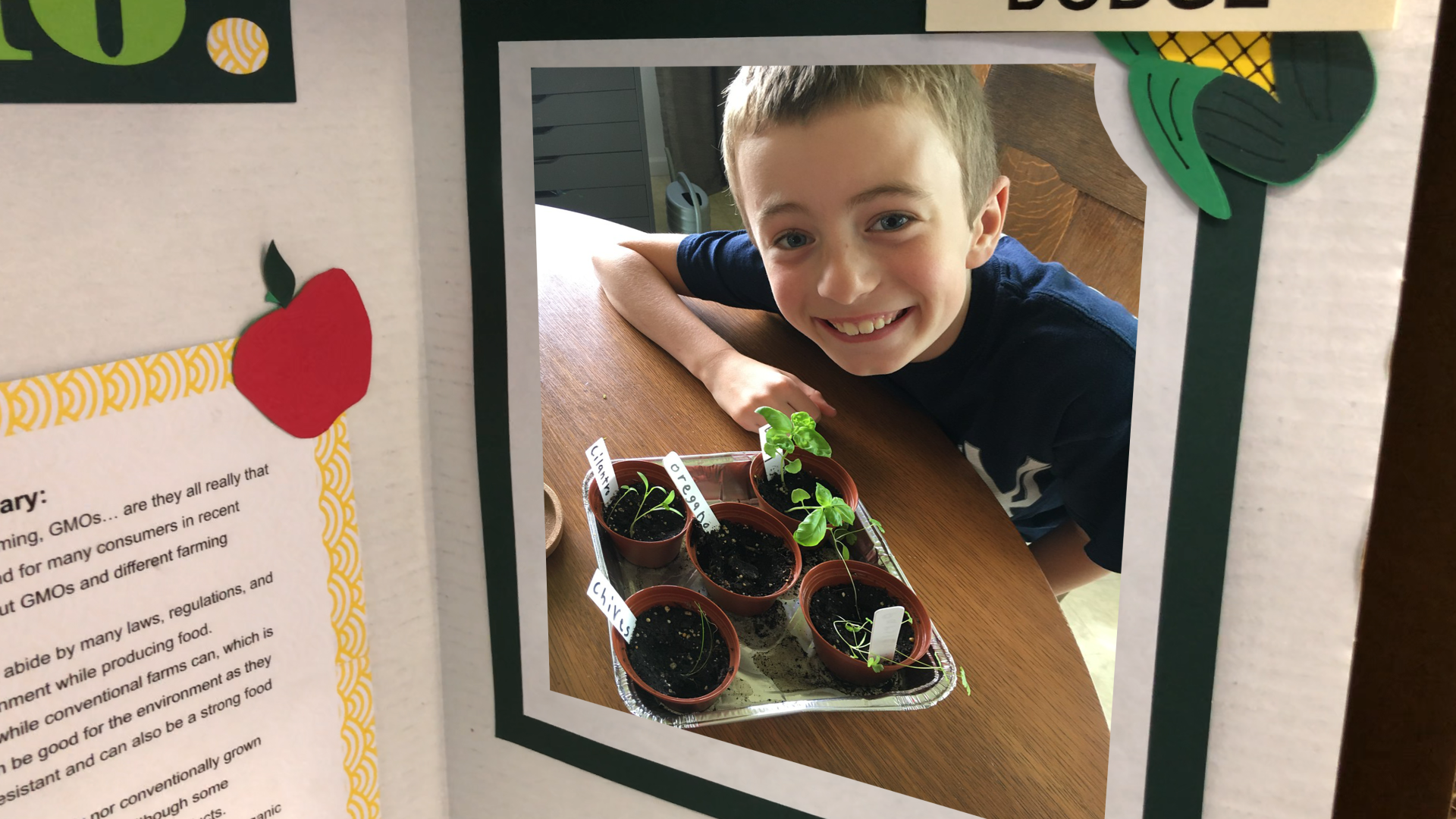National 4‑H Week was October 3 - 9. Over the summer, Compass chatted with some Minnesota, 4‑H agronomy students and their educator about the science of growing plants.
Minnesota 4-H Agronomy


National 4‑H Week was October 3 - 9. Over the summer, Compass chatted with some Minnesota, 4‑H agronomy students and their educator about the science of growing plants.
For Minnesota 4‑H students, the Minnesota State Fair is a capstone experience where students exhibit projects, animals, plants and knowledge learned throughout the previous year. Five years ago, Minnesota 4‑H, with some very targeted money from the Minnesota Corn Growers Association, added agronomy, the science of growing plants, to their 4‑H programming ecosystem.
Brian McNeill is a regional 4‑H extension educator based in Morris. Because 4‑H students can span from ages 5 to 19, agronomy projects also vary. Younger students can get project kits, "where they'd get a box or a bucket and they're actually able to grow corn in a bucket and learn about growing that," said McNeill.
The older students can visit colleges that have agronomy programs or go on industry tours. And as the agronomy program closed its fifth year, 4‑H cultivated new educational experiences. "One is around ag technology and we had a young person do some stuff around GMOs," explained McNeill, standing in front of collection of final project poster boards in the 4-H Building at the Minnesota State Fair.
That young person is Ellie, now a high school senior, is an Ag Ambassador from Dodge County. The poster board that she showed at the Minnesota State Fair — with info mostly sourced from the USDA and FDA websites — is all about GMOs, Genetically Modified Organisms. Her project explored GMO-related topics, like the 10 types of GMO crops grown in the U.S. and the difference between selective breeding and GMO's.
"Selective breeding is done differently. It's more like breeding from different pollens and things like that," Ellie explained, standing in front of her GMO poster board. "GMOs are like on the molecular level, so it's scientifically altering the genes to make it more disease resistant or produce better yields or different things like that."
Another new opportunity is studying specialty crops. Kellie, who was in her first year of college when we spoke, is an Ag Ambassador from Stevens County. She brought her grand champion specialty sugar beets to the State Fair. "They're specialty crop because they're not a row crop," Kellie said. "It's not like your corn or soybeans. These get cut up and produced into the sugar that a lot of people put in their cereal or put in their cookies every day."
As a college student, Kellie has been looking into agronomy and ag business at school. As a 4-H Ag Ambassador, a leadership opportunity for older 4-H students, part of her role is to share her knowledge with younger students; and maybe even bust some agriculture myths that new students— and the general population — might have about ag.
"So our Ag Ambassadors, one of the issues they wanted to work on was busting myths around ag. They had many conversations that people just don't understand the world of agriculture," said McNeill. "So they took time and learned from industry experts and created a virtual experience busting myths, did many presentations virtually to different youth groups, different staff groups about busting these ag myths. And with that kind of momentum, we decided to do it at the state fair as well."
So let's bust some myths! Courtney from a Anoka County and Keegan from Renville County are also both 4-H Ag Ambassadors. They learned that cow farts are really misunderstood.
"I'm sure you've probably heard that a lot of people think that cows are the biggest producer of gas. And that is actually not true," said Courtney, busting the myth titled, Agriculture is Bad for the Environment. "In the U.S., the biggest producer of gas is actually industry. So that's factories and production, and agriculture is only 10% and most of the gas that cows do produce, it gets absorbed back into the soil and in the plants because there's a protein in the plants that only cows can digest, they eat those plants. So it's just a big cycle for them."
The next myth Keegan busted was titled, Corn Only Has One Use. "So the myth we're busting here, is corn only has one use, that is not true," Keegan said. Courtney and Keegan explained that field corn also known as dent corn, is used for animal feed, food products and ethanol fuel. And plenty of Minnesotans are familiar with the crunchy, summertime backyard barbecue favorite, sweet corn, but sweet corn is also used for corn starch. There's corn oil, not super common said Keegan, and obviously popcorn.
"Popcorn, that's used to make popcorn. And all these are very different in size. The field corn, a lot bigger, a lot wider. Sweet corn, kind of the same size, very soft kernels though," Said Keegan. "So the kernels are these little yellow pieces, and that's what make up the corn, and our flour corn here that's to make your corn tortillas."
As Minnesota 4‑H continues to fertilize their program, more opportunities for students interested in agronomy have taken root. Brian McNeill says that any time a young person gets their hands dirty and learns about how dirt helps plants grow, "they can learn a lot from taking care of that plant and then watching it grow, but then learning about it as it's growing. I think getting young people to see their global footprint and their footprint in agriculture and what that does in your specific community, or what that has that effect to someone else in Nepal or Japan or someplace else in the world. We're all connected. And so it's getting people to see the bigger picture of where they fit with agriculture, where they are, but how they affect others."